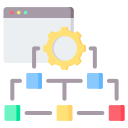
Start Smart: Introduction to Cross-Platform Mobile Development
Chosen theme: Introduction to Cross-Platform Mobile Development. Welcome to a friendly, practical kickoff on building high-quality mobile apps for multiple platforms from one codebase. Explore foundational ideas, learn from real stories, and share your goals so we can improve together.
Why Cross-Platform, Why Now?
Shipping to iOS and Android with a single codebase reduces feature drift, accelerates iteration, and preserves your team’s focus. It also encourages shared patterns and components. Which screens do you target first, and how will you measure parity between platforms?
Cross-platform approaches consolidate skills, shorten release cycles, and simplify hiring. You trade some platform-specific optimizations for speed and alignment. Share your constraints—deadline, budget, or team size—and we will tailor future posts to help you navigate them effectively.
What made you curious about cross-platform development today? Are you exploring a prototype, or preparing a production launch? Comment with your current challenge, and subscribe for practical guides that meet you exactly where you are.

Native vs. Hybrid vs. Cross-Compiled
Native apps use platform languages and UI controls directly. Hybrid apps render web content in a shell. Cross-compiled frameworks render with native or custom engines and access device APIs through bindings. Knowing these differences clarifies tradeoffs in performance, tooling, and flexibility.

Bridges, Runtimes, and Rendering
React Native historically used a JavaScript bridge, evolving toward JSI and Fabric for lower latency updates. Flutter compiles Dart ahead-of-time and renders with Skia. Each approach shapes performance, debugging, and plugin ecosystems. Bookmark official docs, then test assumptions with profiling early.

Learning Path Starter
Pick one framework, build a simple to-do app, integrate a native feature like camera or biometrics, write tests, and publish to internal testers. Commit to small, daily milestones. Tell us which framework you chose so we can share targeted resources and starter templates.



State Management That Scales
Choose predictable patterns such as unidirectional data flow, MVVM, or Bloc-like architectures. Keep effects controlled, avoid global mutable state, and centralize business rules. Comment with your preferred pattern, and we will publish example repositories with tests to demonstrate resilient state transitions.
Module Boundaries and Shared Layers
Share domain logic, validation, and networking across platforms. Keep UI and hardware integrations platform-specific. Use dependency inversion to swap implementations cleanly. Feature flags help manage platform differences. What layer is hardest for you to share? We can write a deep-dive addressing that pain.
Anecdote: The Offline Weekend Fix
A team shipped an update that broke offline caching on Android but not iOS due to subtle storage differences. By abstracting persistence behind a shared interface, they fixed both platforms Monday morning. Test with airplane mode early, and share your best defensive testing tips below.
Performance and UX Considerations
Rendering paths shape smoothness, memory, and startup. Flutter’s Skia offers consistent visuals; React Native’s Fabric improves synchronization with native views. Measure with Android Profiler and Xcode Instruments. Profile early builds, fix jank hotspots, and tell us which tools surfaced your biggest win.

Testing, CI/CD, and Publishing
Unit, Widget, and End-to-End
Combine unit tests for logic, widget or component tests for UI states, and end-to-end tests for flows. Keep tests deterministic with fixtures and fake services. Post your current coverage, and we will recommend quick wins to catch regressions without slowing your team.
Automating Builds for iOS and Android
Use GitHub Actions, Bitrise, or Codemagic to automate builds, run tests, and sign artifacts. Manage certificates securely, cache dependencies, and version consistently. Nightly builds reveal flaky tests early. Which CI are you using today? Comment, and we will share a starter pipeline.
Store Readiness Checklist and Community
Prepare screenshots, privacy details, content ratings, and review notes. Test deep links, notifications, and restore purchases. Use internal testing tracks before public release. Subscribe for our upcoming launch checklist template, and tell us what blocked your last submission so we can cover it.
